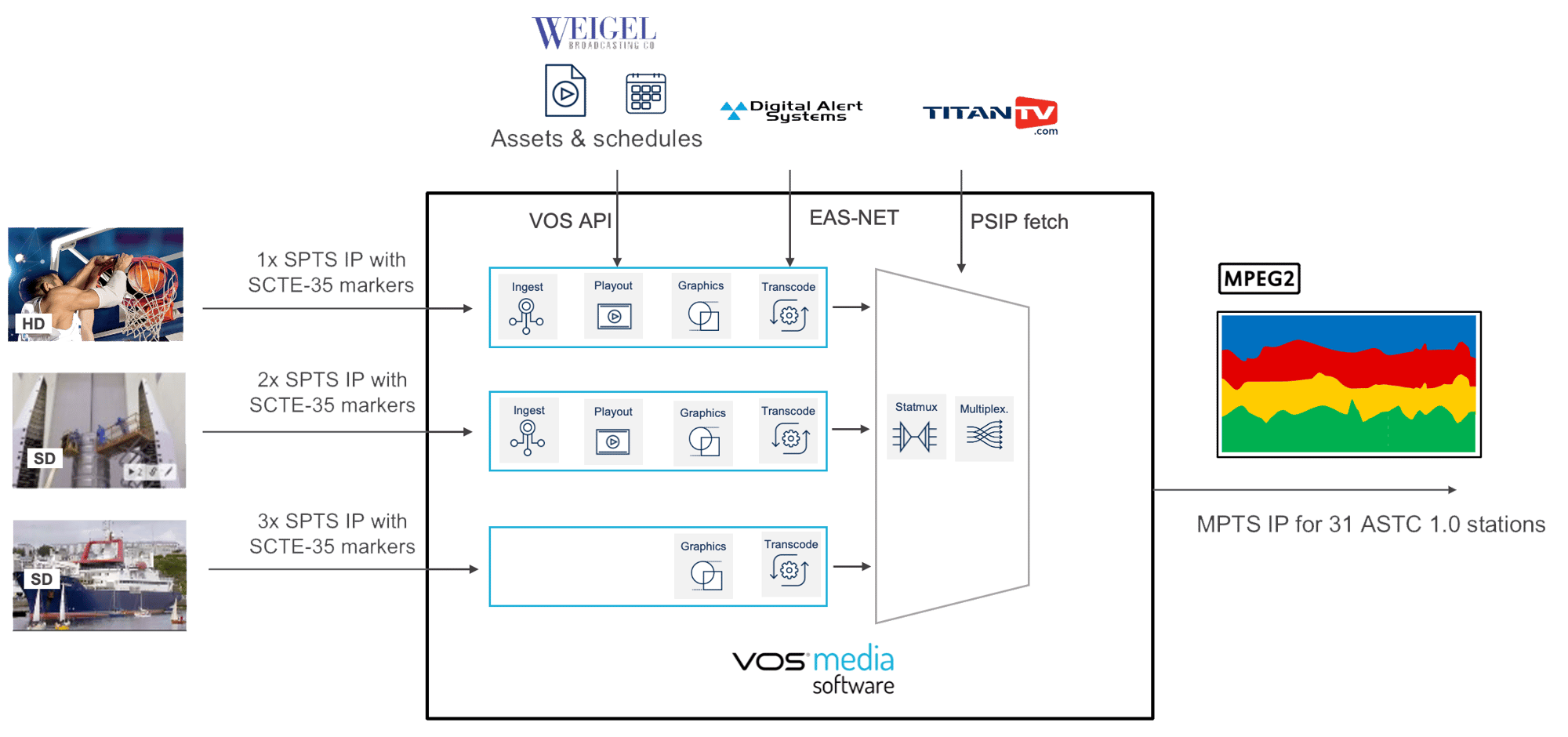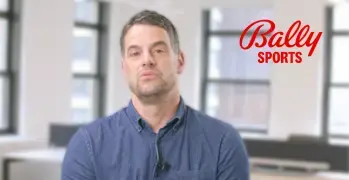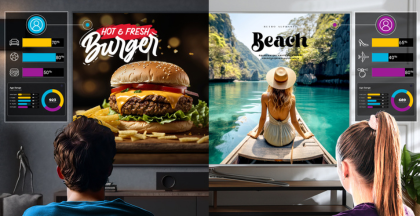Weigel Broadcasting
Transforms Video Distribution with Harmonic’s Playout-to-Delivery Solution
One of North America’s leading broadcasters, Weigel Broadcasting, has built a reputation for delivering beloved networks to millions of viewers. A family-owned media company headquartered in Chicago, Weigel brings classic and contemporary entertainment to audiences nationwide with its diverse lineup of networks, which includes MeTV, Catchy Comedy, Movies!, Heroes & Icons and more.
As Weigel’s portfolio of stations has grown, so has the complexity of its operations. Managing a growing network of affiliate stations with traditional broadcast workflows — reliant on standard-alone hardware like encoders and PSIP generators — was becoming unsustainable. Each new station required costly “pizza box” appliances, creating a maze of redundant equipment and interoperability challenges.
Weigel needed a modern solution to centralize workflows, reduce costs and support its ambitious expansion plans.

// THE CHALLENGE
Breaking Free from Hardware Limitations
Weigel’s success hinges on its ability to deliver high-quality programming across an ever-growing number of stations. Yet with 25 television stations spread across the country, including seven digital OTA television networks, Weigel’s reliance on fragmented, hardware-heavy systems posed limitations on efficiency and growth.
Local affiliate stations required separate playout servers, encoders and program guide generators — each adding costs, maintenance headaches and workflow bottlenecks. As demand for localized content surged, Weigel’s engineering team faced mounting pressure to simplify operations.
“We needed to eliminate the clutter. Every new station meant more hardware, more testing and more complexity. We wanted a future-proof approach — one that would let us scale without drowning in additional hardware boxes.”
– Kyle Walker,
Vice President of Technology at
Weigel Broadcasting.

The Goal was Clear
Weigel had to consolidate workflows, reduce hardware dependencies and deploy a unified media processing and delivery solution capable of supporting rapid growth.
// THE SOLUTION
A Cloud-Native, Playout-to-Delivery Revolution
Weigel determined that a cloud-native, playout to delivery approach was the optimal path forward, enabling the integration of automation, advanced playout and branding, premium encoding and all the advanced broadcast features it needed into a single, unified platform. By virtualizing these functions, the broadcaster could reduce the hardware sprawl and manual processes that were holding them back, gaining substantial flexibility, scalability and cost savings.
Weigel turned to Harmonic’s VOS® Media Software to achieve the efficiency and scalability their traditional setup could not provide. Instead of relying on a patchwork of standalone appliances like encoders, playout servers and PSIP generators at each affiliate station, Weigel put Harmonic’s VOS Media Software at the heart of their central data center. This allowed the broadcaster to pre-assemble all channels and distribute air-ready signals directly to affiliates, effectively eliminating the need for local hardware.
By embracing VOS Media Software’s central casting capabilities, Weigel now manages 31 ATSC 1.0 signals, including both HD and SD channels, from a single, centralized location. This shift empowered Weigel’s engineering and operations teams to take complete control over 24x7 linear channel origination, statistical multiplexing, branding and content delivery within the cloud.
Advanced features that once required multiple third-party systems — such as AI-driven captioning, Nielsen watermarking, SCTE-35-based graphic and commercial insertion and dynamic delay-line programming — are now unified within the VOS platform, allowing Weigel to deliver compliant, high-quality broadcasts more efficiently than ever.
Weigel also capitalized on VOS Media Software’s containerized, dynamically scalable architecture. As their roster of channels and the demand of each market grows, Weigel can easily scale resources up or down, allocating processing power exactly where it is needed — without the burden of new hardware purchases or the risk of over-provisioning. This agility has proved especially valuable for timely market launches and ongoing expansion.
Operations are further simplified thanks to VOS Media Software’s browser-based interface, which replaced complex automation systems with user-friendly tools. Weigel’s team can now monitor playlists, manage playout and oversee encoding workflows all through a unified web UI, eliminating the need to install additional client applications on individual workstations.
Critically, Weigel has harnessed the all-in-one approach of Harmonic’s solution to combine ingest, playout, transcoding, PSIP, EAS and distribution into a seamless workflow. The result is not only substantial cost savings but also the elimination of traditional interoperability challenges, as there is no longer a need to patch together services from multiple vendors.
Now, when new channels or expanded services are needed, Weigel simply enables additional instances within their existing software environment, avoiding hardware delays and enabling greater operational flexibility.

// THE RESULTS
Efficiency Meets Scalability
The impact of deploying VOS Media Software was immediate.
By consolidating workflows into Harmonic’s software solution, Weigel reduced hardware costs and operational inefficiencies. The affiliate stations no longer needed racks of encoders or PSIP generators, reducing both upfront expenses and long-term maintenance. Centralized operations also eliminated interoperability issues, freeing engineers from troubleshooting disparate systems.
But the true breakthrough was the gain in scalability. Adding a new station, previously a weeks-long process of procuring and installing hardware, became simple through allocating additional software capacity. This agility proves critical as Weigel expands into new markets, supporting rapid growth without the delays of traditional infrastructure.
Financially, the shift to a software-driven model unlocked predictable budgeting. Harmonic’s subscription-based pricing allows Weigel to align costs with usage, avoiding hefty upfront investments. “The monthly model gives us room to innovate,” noted Walker. “We can redirect savings toward content and audience growth.”
Most importantly, Weigel future-proofed its operations. The same system now supports ATSC, streaming and split signal workflows — a versatility that positions Weigel to adapt as viewer habits evolve and ensure future business success.
“Harmonic’s solution wasn’t just about cutting hardware — it was about reimagining how broadcast workflows should work. Suddenly, tasks that used to take days could be handled in just hours.”
– Kyle Walker,
Vice President of Technology at Weigel Broadcasting.
A New Era for Broadcasting
Following the implementation of VOS Media Software, Weigel’s transformation has set a new benchmark for operational success. They have already created 25 ATSC 1.0 multi-program transport streams (MPTS), with 75 separate channels now being played out by VOS Media Software. High-definition channels benefit from SCTE-35-based commercial insertion, a leap forward in monetization and flexibility. Looking ahead, Weigel is preparing to increase its reach even further. The next wave of improvement will see SCTE-35-based commercial insertion extended to standard-definition channels, reinforcing Weigel’s commitment to innovation and market leadership.
Weigel’s partnership with Harmonic underscores a broader shift in broadcast technology. By embracing cloud-native solutions, broadcasters can move beyond the constraints of legacy hardware, streamline operations and scale with unprecedented ease.
For Weigel, the transition has not only reduced costs but also empowered its team to focus on innovation rather than infrastructure. In doing so, Weigel has positioned itself at the forefront of a more efficient, scalable future.
“Harmonic’s solution redefines what channel-in-a-box means,” said Gil Rudge, Harmonic’s senior vice president, solutions and Americas sales, video business. “As one of the first broadcasters utilizing a next-generation playout-to-delivery solution, Weigel isn’t just keeping pace with industry changes — they’re leading them.”
Learn more about Harmonic's playout-to-delivery solution.









